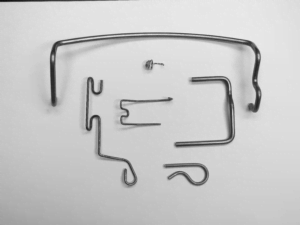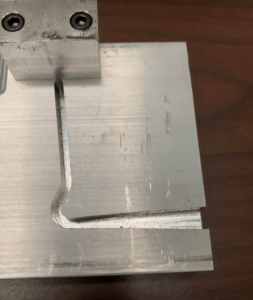Tolerancing standards for custom wire forming applications are different from those used for precision machined parts, as well as custom springs.

Most methods of machining (such as turning, milling, and drilling) can hold exceptionally tight tolerances. Machining tolerances typically cannot be applied to springs. Instead, springs have well-defined tolerance criteria put forth by the Spring Manufacturers Institute. Wire forming is not quite like either.
There is no official industry standard for tolerancing wire forms, so individual manufacturers set standards and guidelines based on their experience and capabilities as well as the engineer’s design and requirements. Wire forms generally require more leniency in tolerancing, but their flexibility often ensures that looser tolerances do not impact functionality.
It is possible to achieve tight tolerances with wire forming services, but doing so requires more extensive processes and can increase costs. When in doubt, follow these six rules of thumb for tolerancing wire forms to optimize quality, cost, and lead time.
Best Practices for Wire Form Tolerancing
1. Define your most critical tolerance
The most critical tolerance is often located where the wire form interfaces with another part of the assembly. At Gifford Spring Company, we will want to pay close attention to this tolerance, so we ask that you call it out explicitly.
For example, if a coil or radius fits over an 0.25” O.D. rod, we need to ensure that the inner bend radius or coil I.D. does not interfere with the rod while remaining in a specific tolerance range. The rest of the part should include reference tolerances wherever a dimension does not require close inspection.
If you are not comfortable forgoing inspection for non-critical features, we are happy to accommodate you. In that case, we still recommend providing a more forgiving tolerance for the rest of the part.
2. Base your tolerances on wire size
Wire size is a helpful metric on which to base wire forming tolerances. Our rule of thumb is to hold to +/- half of a wire diameter for a straight length.
If we are machining a straight length on a wire form with 0.25” material, we recommend a tolerance of +/- 0.125” on the length. If the material is 0.120”, we recommend a tolerance of +/- 0.060.”
While these may seem like wide tolerances, wire forms are generally flexible enough to deflect into an assembly, even with looser tolerances. We are always willing to devise a plan for achieving tighter tolerances during wire forming services, but if more development time or different processes are required, it can impact cost.
3. Keep angular tolerances to +/- 3 degrees
We can comfortably hold +/- 3 degrees as our standard when tolerancing bends angles.
Tighter tolerances are possible depending on your design, but with more bends, each angle’s variation adds up and impacts the wire form’s final shape. To ensure the best outcome, we advise customers to think critically about bends in their design.
4. Increase tolerances if measuring across multiple bends
The more bends there are between two points on a wire form, the harder it is to hold a specific tolerance.
For this reason, tolerances must increase when measuring across multiple bends. At Gifford Spring Company, we can review your wire form drawing and advise you on the achievable tolerances in the case of multiple bends.

5. Supply a check gauge
One way to verify that your wire form will fit in an assembly is to provide a check gauge, sometimes called a go/no-go gauge, for us to test the fit and/or function.
A check gauge simulates the final assembly and/or has a negative cavity of the profile of the wire form with space added for allowed tolerances. If the wire form fits the check gauge (or does not fit a “no-go” gauge), it indicates that the part meets specifications.
6. Clarify Wire Cut-Off Requirements
Burrs commonly occur during custom wire forming at the cut-off points, but we can leverage secondary processes or special cutting tools to minimize them. If your wire form needs a smooth, clean cut on its end, let us know, and we will employ one of these techniques.
Some wire forms have nearly no burr depending on wire diameter, tensile strength, and which cutting tool is used. We always recommend testing your wire form without a secondary chamfer or deburr process. These processes add to production costs, and are not always necessary for functionality.
Keep in mind that these guidelines are general and that tighter tolerances are always possible when manufacturing wire forms. At Gifford Spring Company, we are happy to work with customers to determine the optimal tolerancing for a well-functioning wire form within budget. Request a quote today!